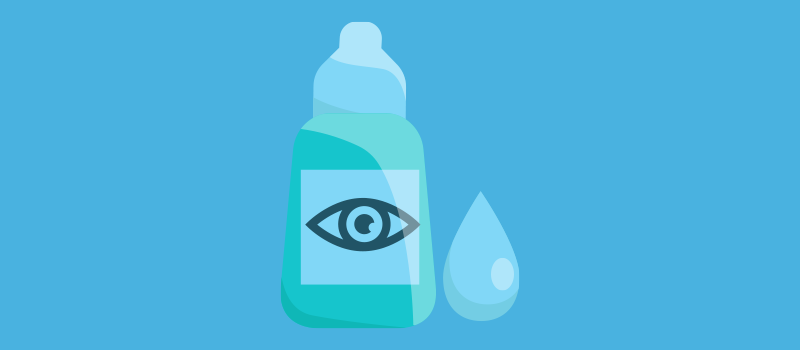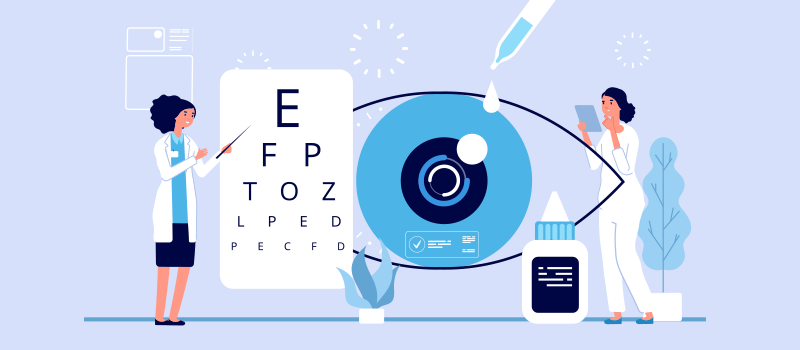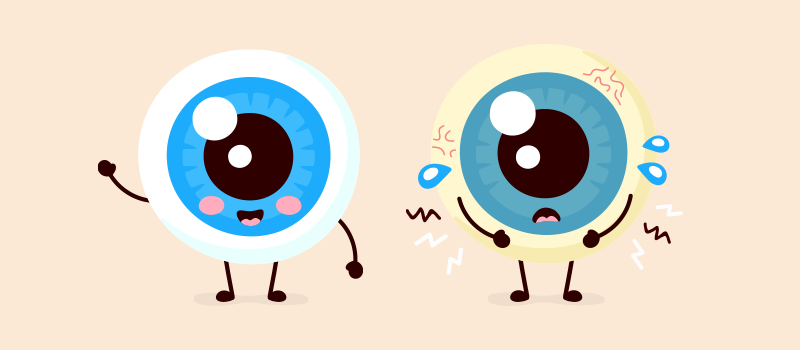What’s the Buzz
The Bee Healthy Blog
The Best Eye Drops for Dry Eye

Dry eye is a condition in which the eyes don’t make enough tears for proper lubrication. Without enough lubrication, the eyes can become inflamed, and the eyes’ surface can be damaged. Dry eyes can occur for various reasons, ranging from decreased tear production due to age and side effects of medications to increased tear evaporation due to environmental factors (for example, working long hours at a computer). With mask wearing during the COVID-19 pandemic, dry eyes have become more common due to air flowing upward towards the eyes and causing evaporation of tears.
If you have dry eyes, your eyes can appear red and irritated and feel itchy and gritty. You might also have stinging, burning, blurry vision, difficulty wearing contact lenses, and difficulty driving, especially at night.
You don’t have to live with dry eyes. A good eye drop can relieve your symptoms and prevent eye damage. But not all eye drops are created equal. Please keep reading to learn about what you should look for in prescription and over-the-counter eye drops for dry eyes. Also, find out when to see an optometrist or eye doctor.
What is the best eye drop for dry eyes?
There are certain things you should look for in eye drops for dry eyes. Here’s a quick overview.
Preservative Free Eye Drops
The best over-the-counter drops for dry eyes are preservative-free drops or preservative-free tears. This is because preservatives can irritate the eyes and make dry eyes worse in many people.
Preservatives are added to eye drops to prevent harmful microorganisms from growing inside the bottle. They ensure that the eye drops are safe and sterile. However, long-term exposure to preservatives can damage the eyes.
Preservative-free versions of eye drops don’t come in a bottle. Instead, they are packaged as single-use units to eliminate the risk of contamination. This makes preservative-free eye drops more expensive than the versions that contain preservatives. Some brands like TheraTears have overcome this problem by using preservatives that turn into oxygen and water when they come in contact with the eyes.
Active Ingredients
You should be aware of the active ingredients in your eye drops. Common active ingredients include glycerin, carboxymethylcellulose, propylene glycol, and polyethylene glycol. Eye drops containing mineral oil or lipids are preferable because they protect the eyes and prevent tear film evaporation.
Knowing the active ingredients in your eye drops is essential because you might have an allergy to a particular ingredient. If that is the case, you will need to avoid drops that contain that specific active ingredient.
Also, some active ingredients like glycerin and carboxymethylcellulose are gentle enough to be used in people with sensitive eyes or those who have had LASIK procedures. Other drops may be appropriate for contact lens wearers. It may take some trial and error to find the best eye drops that work for you.
Note that some eye drops for redness work by reducing the size of the blood vessels in the eyes. When the drug wears off, the blood vessels return to their original size, and the redness returns. Prolonged use of these drops can permanently enlarge the blood vessels, making eye redness even worse. This is called the rebound effect.
Consistency
Some eye drops have a thick eye gel-like consistency, while others are thinner. For people who need soothing in addition to lubrication, thicker eye gels are better and provide longer-lasting relief.
Nighttime vs. Daytime Eye Drops
Some eye drops are specially formulated for use at night, others during the day, and some for nighttime and daytime use. Daytime formulas work quickly and provide temporary relief. They soothe dry eyes rapidly during the day. Nighttime dryness is usually better treated with eye drops with a thicker consistency. They can ease dry eye symptoms with long-lasting moisture on overnight use. The eye drops you choose should match your symptoms and lifestyle. You can use a combination of products for 24-hour relief from dry eyes.
Packaging
Some eye drops for dry eye come in sterile, single-use packaging, which eliminates the risk of contamination. This is preferable but can be more expensive.
Value for Money
Some lubricating drops are long-lasting and formulated so that a little goes a long way in relieving dry eye symptoms. They offer better value for money.
What is the best over-the-counter medicine for dry eyes?
You can pick up many lubricant eye drops over the counter at a pharmacy or drugstore. There are essentially two types of OTC drops for dry eyes - artificial tears and eye gels. The former adds moisture to the eyes and mimics natural tears. They can be used multiple times throughout the day and provide quick but short-lasting relief. They work well for people who have mild to moderate dryness. Eye gels are thicker with a gel-like consistency. They provide more intense lubrication with longer-lasting effects. Eye gels are suitable for people with more severe dry eye symptoms. However, they can temporarily cause blurry vision.
The key things to look out for in OTC eye drops are that they should be free of preservatives and formulated for dry eyes. In other words, look for eye drops that are labeled lubricant eye drops, moisturizing eye drops, natural tears, or artificial tears.
Avoid using allergy drops that are specially formulated to reduce redness and itching. They may not effectively treat dry eyes. Similarly, conjunctivitis eye drops are formulated to fight infections and will not help dry eye. They may contain preservatives, which are added to increase the products’ shelf-life and can make dry eye worse.
Popular OTC dry eye drops include TheraTears and Refresh Tears, which are both liquid artificial tears. Examples of lubricating gel drops are Blink GelTears and Systane Gel Drops.
Are artificial tears like natural tears? Do they relieve dry eye?
Artificial tears are very effective in soothing, moisturizing, and lubricating the eye’s surface. These lubricating eye drops contain sodium hyaluronate or polyvinyl alcohol as the active ingredient. You can get them with or without a prescription, and they come in bottles or single-use units. No single brand works best for everyone--you may need to try several different brands to find the best eye drops for you.
What are the best prescription eye drops for dry eye?
Prescription eye drops are used only in severe cases of dry eye. The gold standard in prescription medication for dry eye is Restasis. Other options include Xiidra and Cequa. The active ingredient in these is cyclosporine, a drug that suppresses the immune response. It reduces inflammation in the tear ducts, which will ultimately increase tear production. Although a prescription eye drop can provide significant relief by building up the tear film, it can take several weeks to months to notice the benefits.
How many drops should you put into dry eyes?
Please follow the instructions from your eye doctor or pharmacist or read the label on your dry eye drops. The number of drops to be inserted each time will depend on the formula. Usually, one drop per eye is considered one dose. However, some formulas may require more than one drop each time.
How often should you use eye drops for dry eyes?
If the dry eye drops contain preservatives, you should not use them more than four times a day. The preservatives can be toxic to the eyes if the drops are used more frequently or for longer periods. Preservative-free formulas and rewetting drops, on the other hand, can be used as often as needed. However, if you need to use eye drops more than four times a day for relief of itchy eyes or dry eye, it is recommended that you see an eye doctor or eye care professional. This will help avoid serious problems with eye health, and you may be able to get faster relief from dry eyes.
References:
https://www.mayoclinic.org/diseases-conditions/dry-eyes/symptoms-causes/syc-20371863
https://www.reviewofophthalmology.com/article/the-pros-and-cons-of-preservatives











SOCIAL